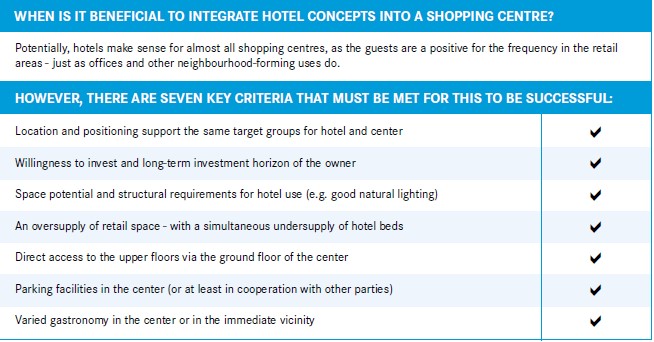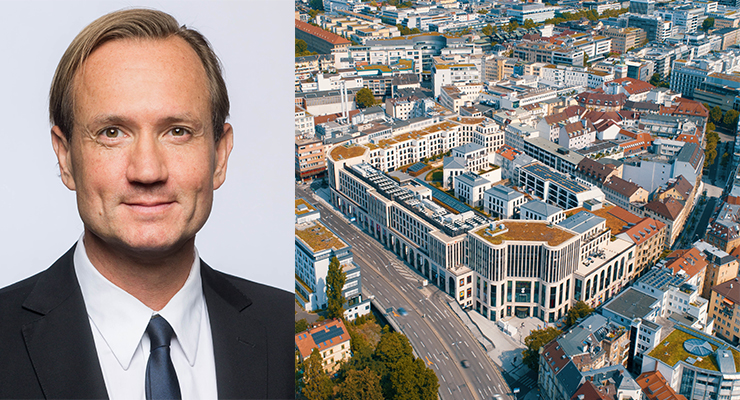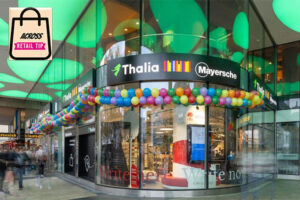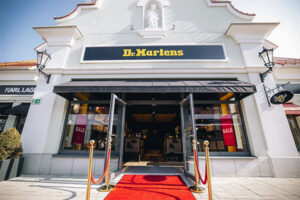The German retail and hotel industries have one thing in common: Neither sector has returned to the level of the last pre-coronavirus year of 2019. However, a comeback is in full swing in both the hotel and brick-and-mortar retail sectors. In retail, exciting new concepts are entering city centers, including luxury brands and new concept stores, as well as manufacturers such as LEGO and M&M’s, which have become retailers in their own right. In the hotel industry, the Federal Statistical Office recorded 487.2 million overnight stays in Germany in 2023. That corresponds to an increase of 8.1% compared to 2022 and a decrease of 1.7% compared to 2019. In addition, the triumph of design and boutique hotels, which was evident prior to the pandemic, has continued.
Therefore, it is beneficial for real estate developers, investors, retailers, and hoteliers alike to explore the potential for collaboration between the retail and hotel industries – to ensure that one can benefit from the growth of the other. Where exactly does the potential lie, and what do successful implementation examples look like at the property level?
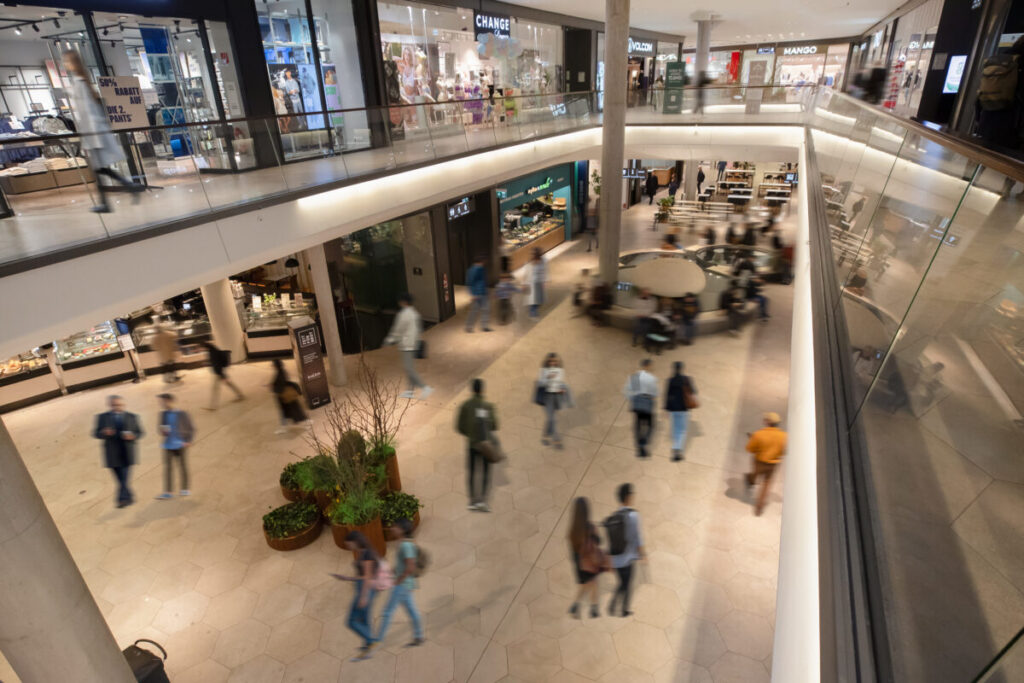
Common Target Groups – Common Infrastructure
The key to such symbiosis is addressing the same target group – for example, city visitors or business travelers. For those two target groups in particular, the combination of shopping, supplemented by restaurants and hotels, is ideal, with the greatest potential lying in the central city center locations. While the hotel occupies the space on the upper floors, which has become increasingly difficult to lease to retail tenants, the hotel guests generate additional sales for the retailers on the ground floor.
One of the most important connecting elements is gastronomy. It has become increasingly rare for newly opened hotels to have their own restaurants – apart from the breakfast areas. That offers hotel guests the opportunity to eat lunch or dinner at restaurants located in the center, which, in turn, increases the length of stay at the respective shopping center. For the restaurateurs in the centers, an ideal opportunity for evening dining and an effective means of combating the otherwise rather low occupancy rate after 6:00 PM.
When it comes to key location factors, there are also a number of similarities between retail and hotel uses: good accessibility on foot, attractive leisure options, including culture and entertainment, as well as other retail and restaurant options in the neighborhood. Both benefit from the mobility advantages of the respective location, such as good public transport connections, as well as good accessibility via private transport. One possible opportunity is the shared use of parking spaces and underground garages (with their own continuously open hotel access) as well as shared links to car sharing and other modern forms of mobility in the shared economy.
Different Companies – One Common Presence
In order to successfully connect the retail and hotel sectors on the operational side, a uniform external image is of particular importance. The management team of the center plays an extremely important role in that respect.
Accordingly, a uniformly recognizable advertising presence on the part of the center and the hotel is the key to successful external perception – including discount campaigns and the coordination of location-related marketing concepts. That requires close dialogue between each party’s respective marketing experts: Which promotions can be carried out together? Which customer base of one party brings added value to the other? Networking on social media platforms, such as Instagram or TikTok, with corresponding posts, interactions, and advertisements, can also create important synergies.
It is also ideal if the hotel views itself as part of the shopping center or the entire city district. If that is the case, there are ideal opportunities for joint campaigns and collaborations on the ground. That can begin with the hotel opening its meeting rooms for internal training sessions and other business appointments for retailers. Shared event areas also create added value for all parties. For hotels with a strong focus on tourism, opening a tourist information center or souvenir store that is accessible from both the center and the hotel is also conceivable.
Good Project Management Is Essential For Success
Meticulous planning and conscientious project management are required, however. Mixed-use properties, in particular, which are revitalized during ongoing operations, have to overcome major challenges to ensure that daily retail and neighborhood operations can continue as smoothly as possible. In addition, the right planning priorities must be established in advance. For example, the hotel’s own infrastructure needs to be sensibly accommodated. Due to its distinct nature and use, it differs greatly from the infrastructure of the center’s gastronomy facilities and the other areas within the center. Therefore, joint use is not a viable option. Ensuring separate access options for the center and the hotel is also important, specifically 24/7 access from the parking garage to the hotel. That should go hand in hand with continuous parking garage operation, which must be technically and economically ensured. Individual evacuation from the hotel must also be possible via separate routes to prevent people from walking through the alarm-protected shopping center.
Success Stories From Berlin To Stuttgart
Examples from all over Germany show that the symbiosis of retail and hotel concepts not only makes sense in theory, but can also be successful in practice. They include Motel One at the “Mall of Berlin”, Ruby, which is part of the “KöGalerie Düsseldorf”, as well as the hotel concepts at the “Ring Center Berlin”, the “Galerie Rostocker Hof”, and the Dorint Esplanade at Goethe Galerie Jena.
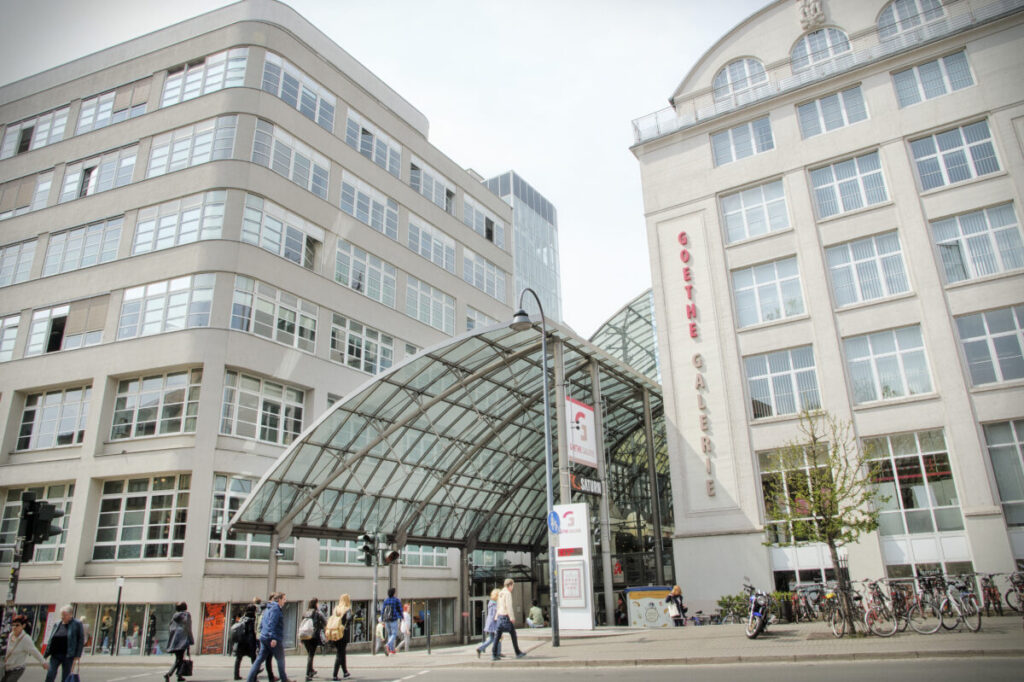
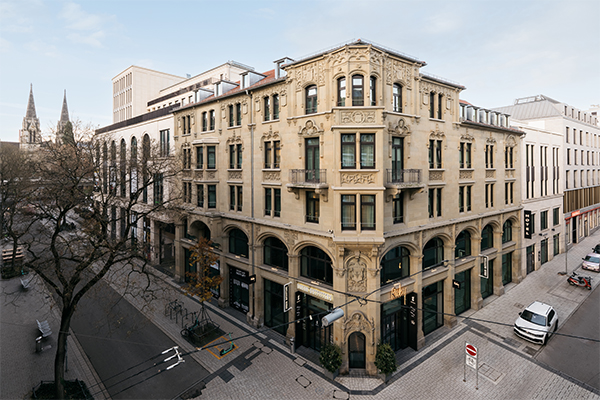
Ideally, a sensible combination can even create a new landmark, as the examples of “Bikini Berlin” and Stuttgart’s “Das Gerber” district have shown.
At Bikini, a concept mall with an alternative food court is complemented by the “25 Hours Hotel Berlin” – including Germany’s famous Monkey Bar, where queues always form, especially during the summer months.
“Das Gerber” in Stuttgart is a good example of the successful revitalization of a former singleuse shopping center in the midst of ongoing operations. With eleven different types of use under one roof – including hotel, retail, office, residential, catering, coworking, local amenities, and parking – as well as a DIY store, medical offices, and a children’s daycare center in the immediate vicinity, it also embodies the image of a modern urban quarter. That is also beneficial for the owner, as the main uses are almost equally weighted, resulting in a diversified cash flow.
The style and orientation of the newly integrated Ruby Hotel also complement the orientation and offering of the “Gerber”, with hoteliers benefiting from the central location in Stuttgart and the high density of jobs in the surrounding area. Following the successful redesign of the “Gerber”, the neighboring retailers have also recorded a positive sales trend, with local bookshops and accessory providers particularly benefiting. The targeted conversion of the upper floor space at the “Gerber” has created a lively neighborhood center.
